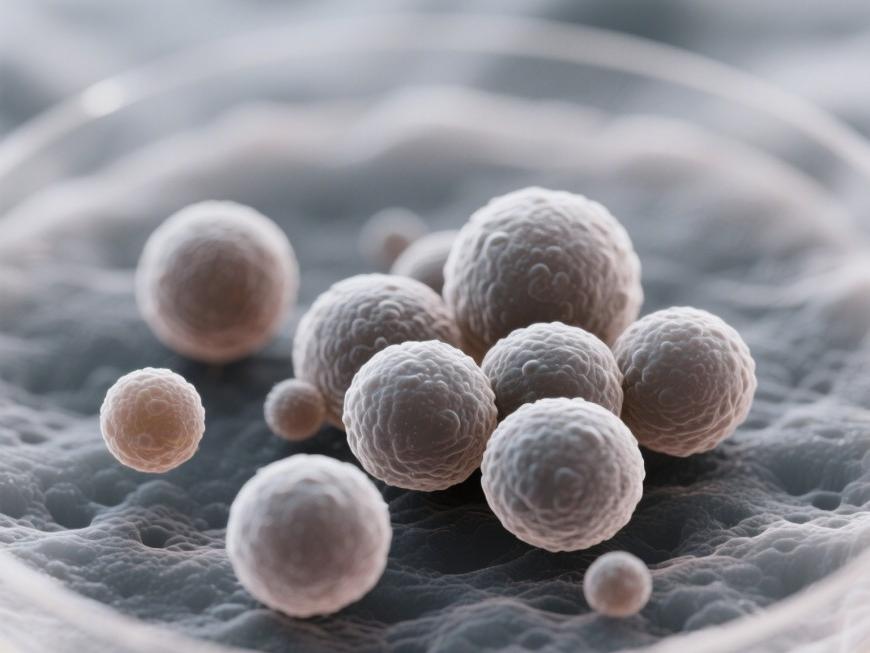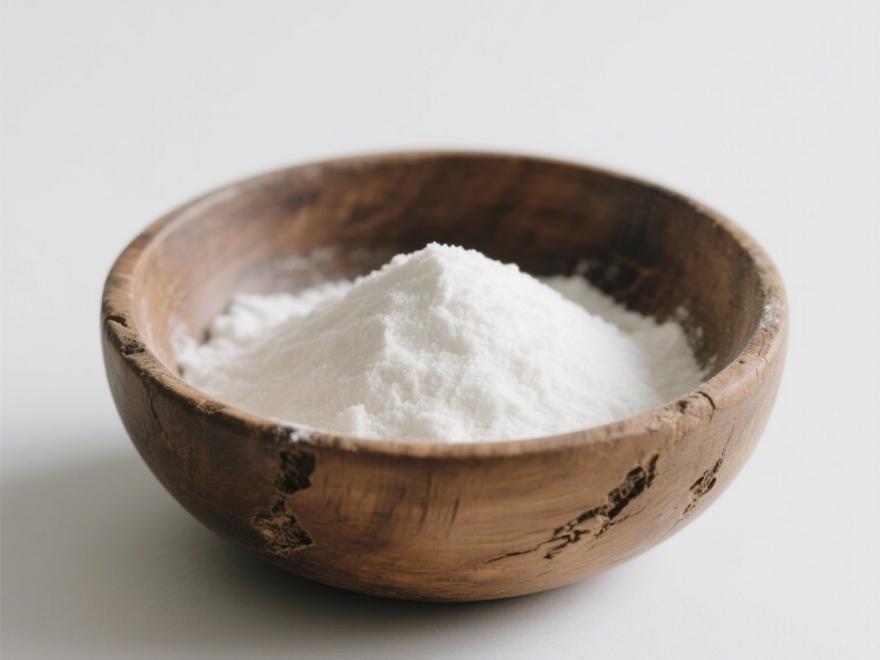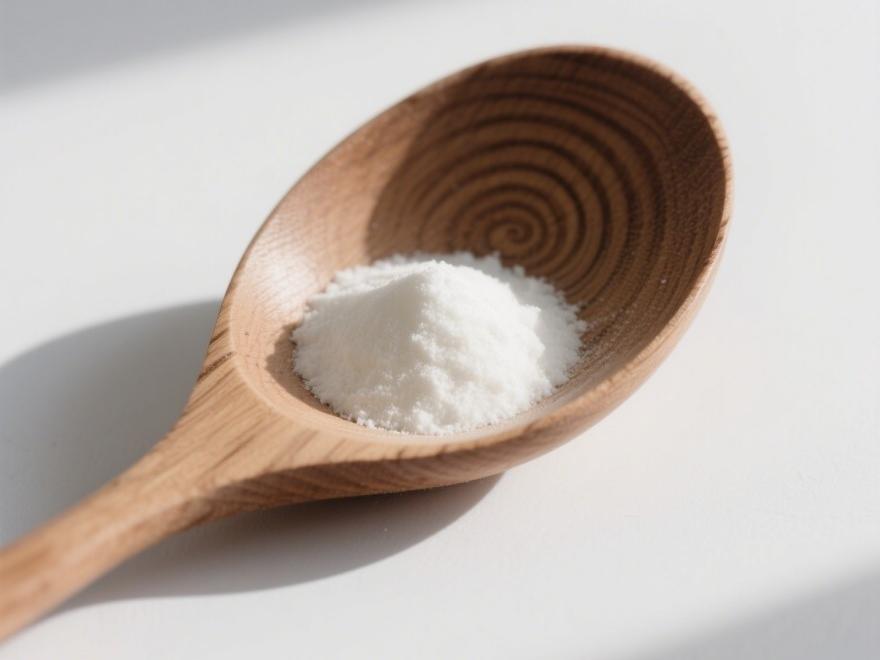Is MCT Oil Safe?
As early as the 1950s, 중사슬 중성지방 (MCT) were introduced into the clinical field, initially used as 한substitute for long-cha에서triglycerides in the nutritional therapy 의patients 와fat absorption disorders. Over the past half-century, 와the deepening 의research into the physical 그리고chemical properties, functional characteristics, metabolic features, nutritional pharmacology, and nutritional physiology of MCT, MCT has found widespread application and development in various fields such as food, pharmaceuticals, cosmetics, and animal feed.
1 Definition of Medium-Chain Triglycerides
Depending on the research objectives, there are differing definitions for the number of carbon atoms in medium-chain fatty acids. In nutrition and biochemistry, medium-chain fatty 산(MCFA) are defined as saturated fatty acids containing 8 to 12 carbon atoms, primarily referring to octanoic acid (C8) and decanoic acid (C10). while in organic chemistry, they are defined as saturated fatty acids containing 6 to 12 carbon atoms. MCFA are present in the dietprimarily in the form of medium-chain triglycerides (MCT), which are triglycerides composed of medium-chain fatty acids, primarily caprylic acid triglycerides and capric acid triglycerides.
2 Sources of medium-chain triglycerides
In nature, MCTs are present in small amounts and are primarily found in coconut oil, palm kernel oil, breast milk, milk, and dairy products. According to data 에서the U.S. Department of Agriculture's Nutrient Database, coconut oil contains 58% MCT, palm kernel oil contains 54% MCT, coconut flakes contain 37% MCT, and raw coconut meat contains 19% MCT. The primary methods for synthesizing MCT artificially include chemical synthesis and enzymatic synthesis. Chemical synthesis methods primarily include hydrolysis esterification and acyl chloride hydrolysis. Hydrolysis esterification involves using coconut oil or palm kernel oil as raw materials, undergoing hydrolysis fractionation and cutting to obtain MCFA-enriched products, which are then esterified with glycerol and refined to produce MCT.

The disadvantages of this method include high energy consumption, lengthy processing times, and difficulty in separating by-products. However, it produces MCT with high purity. The acyl chloride hydrolysis method involves hydrolyzing and fractionating coconut oil or palm kernel oil to obtain MCFA, which is then reacted with trihalophosphine (PX₃) or pentahydrogen phosphine (PX5), or sulfuryl chloride (SOCl₂) to produce acyl chlorides, which are then esterified with glycerol to obtain MCT [1]. Although this method has lower energy consumption and shorter processing times, it involves a more complex process and causes significant pollution. The effectiveness of enzymatic extraction of MCT has been a research hotspot in recent years. Special lipases are used to hydrolyze fats, followed by the addition of glycerol and specific fatty acid glycerides. Under the action of specific immobilized enzymes, the desired medium-chain triglycerides are produced [2]. Compared to chemical synthesis, the enzymatic method has advantages such as high efficiency, specificity, and mild reaction conditions.
3 Physical and chemical properties of medium-chain triglycerides
MCT has a short carbon chain and low molecular weight, making it relatively soluble in water and compatible with various organic solvents, oils, and fat-soluble vitamins. At room temperature, it is a colorless, odorless liquid with a low melting and boiling point, low density, and low viscosity, approximately 50% that of ordinary vegetable oils [2]. MCT exhibits superior extensibility and lubricity compared to most plant oils. Due to the extremely low content of unsaturated fatty acids in MCT, it demonstrates excellent oxidative stability. MCT maintains good stability under extreme temperatures: during prolonged frying, conventional plant oils undergo polymerization reactions, becoming viscous and losing transparency, but MCT only slightly increases in viscosity, remaining comparable to unrefined vegetable oil; at 0°C, MCT remains a clear liquid [3]. The specific physical and chemical properties of MCT are shown in Table 1.
4 Metabolic Characteristics of Medium-Chain Triglycerides
Due to its unique physical and chemical properties, MCT undergoes digestion, absorption, transport, and metabolism in the body differently from loose connective tissue (LCT). Its digestion and metabolism rates are comparable to those of glucose, and it produces energy that is twice as high as that produced by glucose. Xu Junjie [4] et알다.used the PH-stat method to simulate the in vitro digestion of triglycerides with different fatty acid chain lengths in humans and found that the digestion rate of triglycerides with a chain length of 8 (C8) was higher than that of long-chain triglycerides (C18) and short-chain triglycerides (C2). MCTs entering the body have minimal dependence on bile salts and pancreatic enzymes. In the intestine, they are rapidly hydrolyzed by lipases into MCFAs and glycerol. MCFAs do not re-synthesize into triglycerides or form chylomicrons but are absorbed by intestinal epithelial cells and bound to proteins, bypassing the lymphatic system. and are transported directly to the liver via the portal vein. MCFA transported to the liver cells do not require the action of carnitine transferase and directly enter the mitochondria for β-oxidation [5-6].
The acetyl coenzyme A (CoA) produced from MCFA can enter the tricarboxylic acid cycle within mitochondria for complete oxidation into carbon dioxide and water, or form ketone bodies and extend fatty acid carbon chains, or enter the cytoplasm to participate in de novo lipid synthesis [4]. Due to the rapid digestion and absorption of MCTs and their oxidative metabolic characteristics, a large amount of acetyl CoA is produced. Excess acetyl CoA is synthesized into ketone bodies. Ketone bodies, namely acetoacetic acid, β-hydroxybutyric acid, and acetone, are the most important metabolic products of MCFAs when administered orally [7]. The ketogenic effect of MCFAs is virtually harmless to the human body. Even when ingesting several dozen grams of MCFAs, the increase in ketone bodies is transient and rapidly converted into energy substrates for tissues such as the brain, muscles, and liver, without reaching levels indicative of ketosis or acidosis [4].

The ketone bodies produced can be utilized as energy by glucose-dependent tissues such as the brain, reducing the consumption of glycogen and proteins and delaying the onset of fatigue. The metabolic rates of caprylic acid glycerides and capric acid glycerides differ. Donmei Wang et 알다.administered caprylic acid glycerides, capric acid glycerides, and sunflower oil via oral gavage to 21-month-old aged rats for 8 weeks, and found that the 플라 즈 마decanoic acid levels in the decanoic acid glyceride group were higher than those in the caprylic acid glyceride group, indicating that decanoic acid may be absorbed and metabolized more slowly than caprylic acid in the body [8]. The metabolic characteristics of MCT and LCT are shown in Table 2.
MCTs are rapidly digested and absorbed, with unique oxidative metabolic characteristics, conferring them functional properties not found in general plant oils. For example, Kiyoshi Hayasaka et al. concluded from a study of five patients with adult type II citrullinemia that supplementing with MCTs under a low-carbohydrate diet could be used to treat and prevent adult type II citrullinemia, thereby avoiding irreversible liver damage [9].
5 Functional Properties of Medium-Chain Triglycerides
5.1 Role in Preventing Obesity
In the 21st century, obesity has become one of the world's greatest challenges. Statistics show that at least 2.8 million people die annually due to overweight or obesity. Additionally, 44% of diabetes cases, 23% of ischemic heart disease, and certain cancers are attributed to overweight and obesity. Therefore, preventing obesity is of utmost importance. The unique digestive, absorptive, transport, and metabolic characteristics of medium-chain triglycerides (MCTs) prevent them from being stored in human fat, liver, or muscle tissues like long-chain triglycerides (LCTs). Instead, MCTs are rapidly digested, absorbed, and oxidized for energy. Therefore, MCTs effectively inhibit weight gain and prevent obesity, a finding supported by both basic and clinical research. Studies in both animals and humans have shown that, compared to LCT, MCT increases energy expenditure and fat oxidation.
Xue Kun et al. found in rat experiments that, under conditions where feed intake was unchanged, the intake of 0.975 g/kg BW of MCFA had a certain inhibitory effect on weight gain in nutritionally obese rats [10]. Karen Mumme et al. studied the effects of MCT on weight reduction and body composition by conducting a randomized controlled trial on healthy adults over three weeks. Compared to the LCT group, the MCT group experienced weight loss (p < 0.001), reduced waist circumference (p < 0.001), hip circumference (p = 0.002), total body fat (p < 0.001), visceral fat (p < 0.001), and total fat (p < 0.001), but had no effect on lipid levels [11].

Yu Xiaoming et al. controlled the daily dietary intake and oil consumption (25–30 g per person per day) of men with hypertriglyceridemia of different ages and specified exercise regimens. They concluded that under reasonable dietary conditions, consuming medium- and long-chain fatty acid oils can reduce body weight and body fat levels in adult men with hypertriglyceridemia [12]. However, the sustained stability of MCT's role in preventing obesity and its underlying mechanisms require further investigation [13].
5.2 Improving glucose, lipid, and cholesterol metabolism
Xue Changyong [14] et al. investigated the effects of medium-chain fatty acid edible oils containing medium-chain fatty acids as active ingredients on lipid levels in patients with hypertriglyceridemia. Through population-based experiments, they concluded that under reasonable dietary conditions, medium-chain fatty acid edible oils can reduce body weight, lower blood triglyceride levels, and improve lipid metabolism in patients with hypertriglyceridemia.
Liu Yinghua [15] et al. studied the effects of MLCT on lipid metabolism in patients with hypertriglyceridemia (TG) of different genders. They concluded that under a reasonable diet, male patients with high TG levels who consumed MLCT edible oil could reduce body weight, lower blood TG concentrations, improve lipoprotein levels, and regulate lipid metabolism. Studies have shown that deficiencies or defects in lipoproteins or an imbalance between the proportion of lipoproteins in the blood and lipid levels can lead to lipid metabolism disorders [16]. Therefore, MCT may improve lipid metabolism by enhancing lipoprotein levels. Insulin resistance refers to the weakened ability of insulin to promote glucose clearance in the body, which is closely associated with impaired glucose metabolism [17].
Insulin is widely present in tissues and organs such as muscles, fat, and the liver. Therefore, insulin resistance also manifests as impaired insulin sensitivity in the liver, including reduced glucose production, muscle glucose oxidation, and lipid hydrolysis in adipose tissue [18]. MCFAs can prevent the increased intracellular lipid deposition caused by LCFA in tissues such as muscle, liver, and adipose tissue, thereby improving insulin resistance in these tissues and organs and, consequently, improving the body's glucose metabolism [15].
For example, Deng Bin [19] replaced all or part of the edible oil in the diet of type 2 diabetic patients with MCT and found that MCFA could improve insulin resistance in type 2 diabetic patients in the short term. Regarding the effects of MCT on cholesterol metabolism, most studies indicate that MCT can reduce cholesterol accumulation. Xu Qing [20] fed mice a diet supplemented with MCFA for 12 weeks and found that, compared with the LCFA group, the MCFA group significantly reduced body weight, Lee's index, BMI, and liver tissue weight in hypercholesterolemic mice, improved serum total cholesterol, triglycerides, high-density lipoprotein cholesterol, and low-density lipoprotein cholesterol levels, without affecting liver lipoprotein levels. Therefore, MCT also has a cholesterol-lowering effect.
5.3 Antimicrobial Activity
The antimicrobial properties of MCT have led to its widespread application in animal feed. Experimental studies have shown that adding MCT to the diet of piglets can inhibit the number of intestinal microorganisms and improve their growth performance, making it a potential alternative to antibiotics in weaned piglet feed [21]. C.F. Mathis [22] found in a study using feed additives to control necrotic enteritis in broiler chickens that adding organic acids and medium-chain fatty acids to the diet could resist Clostridium perfringens, which is beneficial for controlling necrotic enteritis in broiler chickens. Zhang Xiaobo [23] found through experiments that medium-chain fatty acids can effectively resist the harm of coccidia to the chicken body to a certain extent. These studies have laid the foundation for the application of MCT in chicken feed.

G. Immanuel [24] et al. found through experiments that octanoic acid, which contains eight carbon atoms, exhibits antibacterial activity against Vibrio harveyi and Vibrio parahaemolyticus in aquaculture, with the effect being related to the concentration of octanoic acid and pH, thereby expanding the application prospects of MCT in aquaculture. However, when using MCT to feed animals, it is necessary to explore the addition method, timing, dosage, and ratio of MCT with energy substances such as proteins and carbohydrates to fully leverage its antibacterial and other nutritional and health-promoting functions [25].
5.4 Anti-fatigue effects
For prolonged aerobic endurance exercises, carbohydrates and fats are the most important energy substances [26]. Fat-derived energy primarily involves the hydrolysis of triglycerides by lipases into glycerol and fatty acids. One molecule of glycerol completely decomposes to produce 22 molecules of adenosine triphosphate (ATP), while one molecule of fatty acid oxidation generates approximately 113–147 molecules of ATP [27–28]. Therefore, fat-derived energy primarily refers to the energy produced from the oxidation of fatty acids after hydrolysis. The lipid metabolism process in the body includes the re-esterification of triglycerides from fatty acids and glycerol, as well as the lipolysis of triglycerides into fatty acids and glycerol. Lipolysis is also known as fat mobilization, and appropriately increasing fat mobilization capacity can enhance exercise endurance.
The mechanisms by which MCT enhances exercise endurance may include the following: during prolonged aerobic endurance exercise, fat metabolism is the primary energy source; enhancing the mobilization of fat as an energy source reduces the consumption of carbohydrates and proteins, maintains relatively stable blood glucose levels, improves exercise capacity, and delays the onset of fatigue; MCT has a strong ketogenic effect, and the ketone bodies produced can serve as an alternative energy source for the brain and muscles during prolonged exercise, reducing the consumption of blood glucose. Animal studies have shown that when the MCFA dose is 680 mg/kg BW, it significantly increases liver glycogen reserves, reduces blood urea nitrogen and blood lactate levels, extends the time to exhaustion in swimming tests, and enhances fatigue resistance in mice [29].
Qi Yang [30] further investigated that during exercise, MCT at moderate to low doses can increase fatty acid oxidation for energy production, regulate glucose and lipid metabolism, conserve glycogen, reduce hepatic oxidative stress, and resist exercise-induced fatigue. Ma Shuangshuang [31] found through rat experiments that moderate to low doses of MCT can enhance antioxidant capacity in sleep-deprived rats, prevent oxidative damage, and resist mental fatigue. A foreign study found that during the training interval period of track and field athletes, after 12 weeks of a diet containing MCFA, the trend of serum lactate elevation was suppressed, and tolerance to subsequent moderate- and high-intensity exercise was enhanced [32]. Additionally, studies have shown that as an energy source, MCT, when co-supplied with carbohydrates, can prolong energy release and effectively maintain athletes' energy requirements during prolonged exercise [33].

MCT also possesses functions such as enhancing immunity, increasing gluconeogenesis, improving memory and cognitive abilities, and improving body composition and cardiovascular health [34-37].
6 Safety of Medium-Chain Triglyceride Oil
Multiple animal experiments and clinical studies have demonstrated that MCT oil exhibits good tolerability and safety. In acute toxicity tests, subchronic toxicity tests, and long-term toxicity tests conducted on various animal species, no evidence of reproductive disorders, maternal toxicity, fetal toxicity, or malformations was observed in animals exposed to MCT oil. Additionally, no adverse effects were detected in blood tests, urine tests, or any adverse effects on organ function. In 1994, the U.S. Food and Drug Administration (FDA) listed MCT as a "Generally Recognized as Safe" (GRAS) substance [38]. In 2012, the Chinese Ministry of Health issued Announcement No. 16 of 2012— "Announcement on the Approval of Medium- and Long-Chain Fatty Acid Edible Oils and Wheat Oligopeptides as New Resource Foods"—which approved the use of medium- and long-chain chain fatty acid edible oils as new food resources.
Numerous clinical studies have confirmed that the safe daily intake of MCT for humans is 1 g/kg, with an appropriate intake of 20 g to 30 g per day, while MCFA is best consumed around 10 g [36]. However, there are also reports of potential harm from MCT to humans. For example, studies have shown that high concentrations of caprylic acid in plasma can be harmful to the central nervous system [39-41]. Additionally, reports indicate that if the energy derived from MCTs accounts for more than 50% of total energy intake, it may lead to reduced absorption of long-chain triglycerides, essential fatty acid deficiencies, and symptoms such as vomiting, gastrointestinal discomfort, bloating, abdominal cramps, and osmotic diarrhea [42-44]. Additionally, since medium-chain fatty acids are not essential fatty acids, it is necessary to supplement the diet with adequate amounts of essential long-chain unsaturated fatty acids [45].
참조:
[1] Xia Qiuyu, Zhao Songlin, Li Congfa, et al. Research Progress on Medium-Chain Fatty Acid Triglycerides [J]. Food Research and Development, 2007, 28(7): 150-153
[2] Shao Gangqun, Zhi Peihong, Shen Xia, et al. Research Progress on the Synthesis of Medium-Chain Triglycerides [J]. Food Science, 2011(4):346-347
[3] Liu Xiaojie, He Guoqing, Tao Fei, et al. Medium-chain triglycerides and their applications in the food industry [J]. Food Science, 2005, 26(8):469-472
[4] Xu Junjie, Huang Jianhua, Song Zhihua, et al. Effect of fatty acid carbon chain length on the in vitro simulated digestion of triglycerides [J]. Chinese Oil and Fat, 2014, 39(6): 49-52
[5] Cui Xiaojun, Zhang Ting, Wu Jian. Functions and applications of medium-chain fatty acids [C]//China Oil and Fat Society. Proceedings of the 18th Academic Conference and Exchange Meeting, 2012:209-213
[6] Zhang Yuehong, Liu Yinghua, Wang Jun, et al. Study on the effects of medium-chain fatty acid edible oils on blood lipid levels and low-density lipoprotein cholesterol levels in overweight patients with hypertriglyceridemia [J]. Chinese Journal of Food Science, 2010, 10(2):20-26
[7] Liu Yinghua. Regulatory 효과of Medium-Chain Fatty Acids on Lipid Metabolism in Obese Mice and Their Mechanisms [D]. Beijing: Institute of Hygiene and Environmental Medicine, Academy of Military Medical Sciences, 2012:93
[8] Dongmei Wang, Alice Pannerec, Jerome Feige, et al. Cognition and Synaptic -Plasticity Related Changes in Aged Rats Supplemented With 8-and 10 Carbon Medium Chain Triglycerides[J]. The FASEB Journal, 2015, 29(1):1
[9]Kiyoshi Hayasaka, Chikahiko Numakura, Kentaro Toyota, et al. Medium-chain triglyceride supplementation under a low-carbohy- drate formula is a promising therapy for adult-onset Ⅱ citrullinemia [J]. Molecular Genetics and Metabolism Reports, 2014(13):42-50
[10] Xue Kun, Guo Hongwei, Chen Fenglin. Effects of medium-chain fatty acids on body weight and lipid metabolism in nutritionally obese rats [J]. Health Research, 2006, 35(2): 187-190
[11]Karen Mumme, PGDipSc, Welma Stonehouse, et al. Effects of Medium-Chain Triglycerides on Weight Loss and Body Composition: A Meta-Analysis of Randomized Controlled Trials [J]. Journal of The Nutrition And Dietetics, 2015, 115(2):249-263
[12]Yu Xiaoming, Liu Yinghua, Wang Jun. Effects of Medium-Chain Fatty Acids on Body Composition in Men with Hypertriglyceridemia of Different Ages [J]. Journal of Preventive Medicine of the Chinese People's Liberation Army, 2009, 27(2): 93-96
[13] Xiong Zhengying, Xi Xuefeng. Medium-chain triglycerides and exercise [J]. Sichuan Journal of Physical Education, 2005(4): 34-35
[14] Xue Changyong, Liu Yinghua, Wang Jin, et al. Effects of medium-chain fatty acid edible oil on lipid metabolism in patients with hypertriglyceridemia [J]. Journal of Nutrition, 2008, 30(4): 363-367
[15] Liu Yinghua, Zheng Zixin, Yu Xiaoming, et al. Effects of medium-chain fatty acid edible oils on lipid metabolism in patients with hypertriglyceridemia: Gender response differences [J]. Journal of Nutrition, 2008, 30(6): 551-555
[16]Shi W, Wang X, Wang J, et al. Effect of macrophage-derived apolipoprotein E on hyperlipidemia and atherosclerosis of LDLR-deficient mice [J]. Biochemical and Biophysical Research Communications, 2004, 317(1):223-229
[17]Deng Bin. Medium-chain fatty acids and insulin resistance[J]. Foreign Medicine (Hygiene Edition), 2006, 33(6):362-366
[18]Fery F, Paquot N. Etiopathogenesis and pathophysiology of type 2 diabetes[J]. Revue Médicale de Liège, 2005, 60(5/6):361-368
[19] Deng Bin. Effects of medium-chain triglycerides on insulin resistance in patients with type 2 diabetes [D]. Guangzhou: Sun Yat-sen University, 2006:12
[20] Xu Qing. Regulation of cholesterol metabolism in mice by medium-chain fatty acids and its mechanisms [D]. Beijing: Institute of Hygiene and Environmental Medicine, Academy of Military Medical Sciences, 2013:7
[21]Boyen F, Haesebrouck F, Vanparys A, et al. Coated fatty acids alter virulence properties of Salmonella Typhimurium and decreasein - testinal colonization of pigs[J]. Veterinary Microbiology ,2008(132): 319-327
[22]C F Mathis. New research into feed additives to control Necrotic En - teritis[J]. World Poultry,2006,22(3):13-14
[23] Zhang Xiaobo. The effect of medium-chain fatty acids on susceptibility to coccidiosis [D]. Beijing: China Agricultural University, 2006:36
[24]G Immanuel, M Sivagnanavelmurugan, A Palavesam. Antimicrobial activity of medium-chain fatty acids: the antibacterial effect of caprylic acid on Vibrio harveyi and Vibrio parahaemolyticus isolated from shrimp infected with Brine shrimp larvae [J]. Feed Industry, 2014, 35(20): 61-64
[25] Wang Yufei, Qi Yan, Suzuki Yasuyuki, et al. Study and application of medium-chain fatty acids in newborn piglets. Journal of Animal Nutrition, 2015, 27(7): 1997-2003
[26] Feng Zhiyong, Liu Hongtao, Xu Haowen. Regulation of carbohydrate and fat utilization during endurance exercise [J]. Zhejiang Journal of Physical Education, 2000, 22(5): 38-40
[27] Yu Guoyang. Endurance Exercise and Fat Utilization [J]. Sports World, 2006(11): 40
[28] Wu Juhua, Ju Lili. Lipolysis and Exercise Training [J]. Chinese Journal of Sports Coaches, 2015(3): 19-20
[29]Wei Liu Ph D, Wei -Lin Liu Ph Dc, Cheng -Mei Liu Ph D, et al. Medium -chain fatty acid nanoliposomes for easy energy supply [J]. Nutrition, 2011(27):700-706
[30] Qi Yang. Study on the Anti-Fatigue Effects of Medium-Chain Triglycerides in Exhausted Swimming Mice [D]. Shanghai: Second Military Medical University, 2013:33
[31] Ma Shuangshuang. Effects of Medium-Chain Triglycerides on Antioxidant and Cognitive Abilities in Rats with Mental Fatigue [D]. Shanghai: Second Military Medical University, 2013:26
[32]Nosaka N, Suzuki Y, Nagatoishi A,et al. Effect of ingestion of medi - um-chain triacylglycerols on moderate and high-intensity exercise in recreational athletes[J]. J NutrSciVitaminol, 2009,55(2):120-125
[33]Jenkandmp AE, Saris W H, Schrauwan E, et al. Metabolic availabil - ity of medinm -chain trglycerides coingested with carbohydrates during prolonged exercise[J].J ApplPhysiol,1995,79(3):765-762
[34] Li Lijie. Study on the Immunological Effects and Application of Medium-Chain Fatty Acid Triglycerides as Immunological Adjuvants [D]. Qingdao: Ocean University of China, 2013:93; Zhongshan University, 2006:12
[35]Chitose Sugiyama, Kamrun Nahar Akter, Saho Morishita,et al. Ef- fects of medium-chain triglycerides on gluconeogenesis and ureage - nesis in weaned rats fed a high fat diet[J]. Journal of Nutrition and Intermediary Metabolism, 2015:65-68
[36]Dongmei Wang, Alice Pannerec, Jerome Feige,et al. Cognition and Synaptic -Plasticity Related Changes in Aged Rats Supplemented With 8 - and 10 Carbon Medium Chain Triglycerides[J].The FASEB Journal, 2015, 29(1):1
[37]Nilam Bhavsar, Marie-Pierre St-Onge. The diverse nature of satu - rated fats and the case of medium-chain triglycerides: how one rec - ommendation may not fit all[J]. Lipid metabolism and therapy, 2016, 19 (2):81-87
[38]Traul, K.A, Driedger.Review of the toxicologic properties of medi - um-chain triglycerides[J]. Food and Chemical Toxicology, 2000, 38: 79-98
[39]Livingston S,Pauli LL, Pruce I. Ketogenic diet in the treatment of childhood epilepsy[J]. Dee Med Child Neurol, 1977(19):535-537
[40]Bergman W. Medium-chain triglyceride diet in the treatment of in - tractable childhood epilepsy[J]. Dee Med Child Neurol , 1978(20): 249-250
[41]Haidukewych D, Forsyth M, Sills M. Monitoring octanoic and de - canoic acids in plasma from children with intractable epilepsy treated with medium-chain triglyceride diet[J]. Clin Chem,1982(28): 642-645
[42]WollinSD, WangY, Kubow S, et al. Effects of a 중간 chain triglyceride oil mixture and alpha-lipoic acid diet on body composition, antioxidant status, and plasma lipid levels in the Golden Syrian hamster.[J].NutrBiochem, 2004, 15(7): 402-410
[43]HillJO, PetersJC, Swift LL, et al. Changes in blood lipids during six days ofoverfeeding with medium or long chain triglycerides[J]. Lipid Res, 1990, 31(3): 407-416
[44] Tu Xianghui, Qiu Shoukuan, Yuan Yonghong. Medium-chain triglycerides [J]. Western Grain and Oil Technology, 2002(6): 45-48
[45] Qi Yang, Cai Donglian. Research progress and prospects of medium-chain triglycerides [J]. Journal of Medical Research, 2013, 42(5): 13-15


 영어
영어 프랑스
프랑스 스페인
스페인 러시아
러시아 한국
한국 일본
일본





